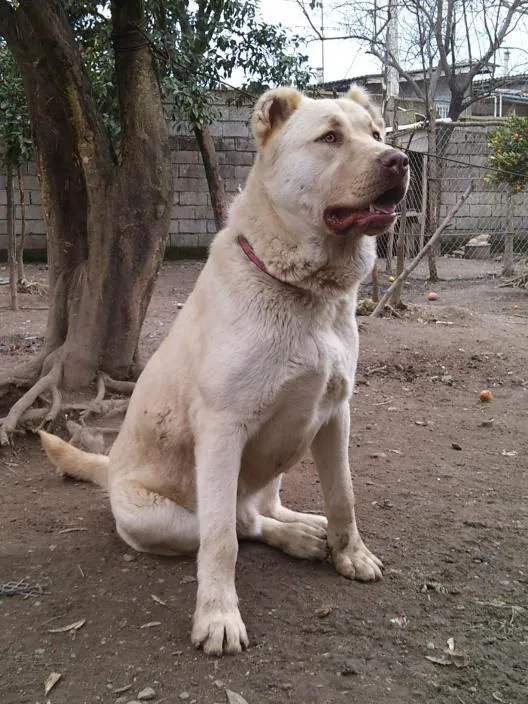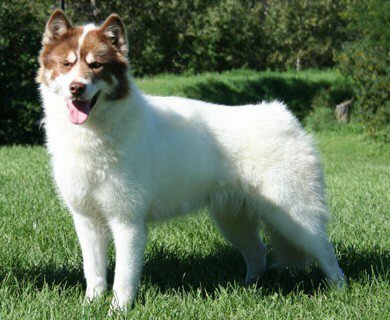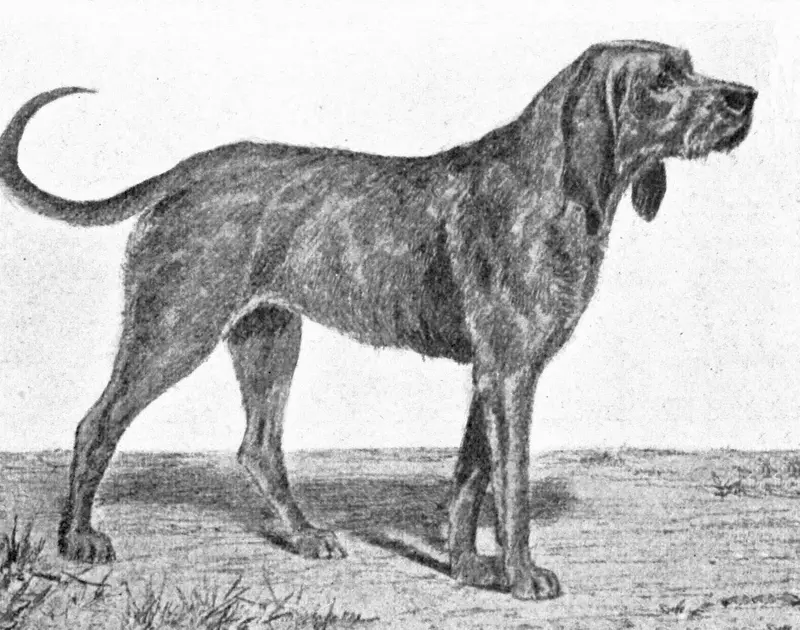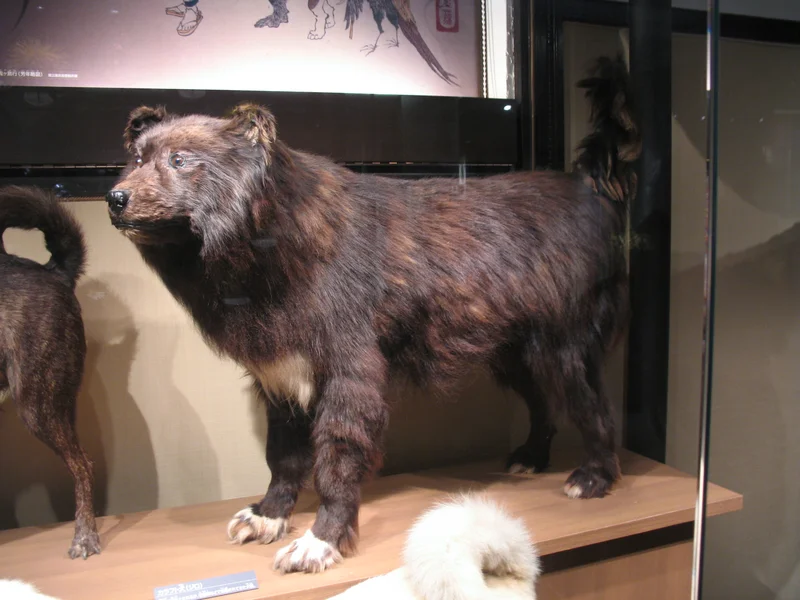Czechoslovakian Wolfdog
The Czechoslovakian Wolfdog is a unique breed developed from German Shepherds and Carpathian Wolves, known for its intelligence, loyalty, and striking wolf-like appearance. They require extensive exercise and training, making them ideal for active, experienced owners.
Overview
🐕Breed Overview
✨Key Traits
💡What Makes Czechoslovakian Wolfdog Special
The Czechoslovakian Wolfdog's most defining traits include its wolf-like appearance, high energy levels, and strong instincts. They are known for their exceptional endurance and navigational skills, making them well-suited for outdoor activities and tasks that require stamina.
Their intelligence allows them to learn quickly, but they may require more time and patience during training compared to traditional breeds. This breed is also characterized by its strong social bonds with family members, showcasing loyalty and protectiveness.
However, their independent nature can lead to challenges in training and socialization, requiring experienced owners who can provide structure and guidance. Their unique blend of traits makes them a fascinating and rewarding breed for the right owner.
The Czechoslovakian Wolfdog is a remarkable breed that embodies the strength and endurance of the Carpathian Wolf combined with the intelligence and trainability of the German Shepherd. Developed in the 1950s through a pioneering breeding program, this breed was initially created for military and special operations, showcasing its capabilities as a loyal and effective working dog. With a striking wolf-like appearance, the Czechoslovakian Wolfdog is characterized by its amber eyes, erect ears, and thick, straight coat that ranges from yellow-grey to silver-grey.
These dogs are known for their high energy levels and require extensive exercise, making them ideal companions for active individuals or families who can provide the necessary physical and mental stimulation. In terms of temperament, the Czechoslovakian Wolfdog is courageous, intelligent, and independent. They form strong bonds with their families and can coexist with other pets when properly socialized.
However, their hunting instincts can pose challenges, especially with smaller animals, so early socialization and training are crucial. While they are playful and eager to learn, training requires patience and consistency, as they may not respond well to traditional methods. Instead, positive reinforcement and engaging activities are key to keeping them motivated.
The breed's versatility extends beyond military applications; they excel in search and rescue, tracking, and various dog sports. Their impressive endurance and navigational skills make them exceptional companions for outdoor enthusiasts. However, potential owners should be aware that Czechoslovakian Wolfdogs are best suited for experienced handlers who can provide the structure and guidance they need to thrive.
With proper training, socialization, and an active lifestyle, these dogs can be loyal and loving family members, making them a unique addition to any home.
🎉Fun Facts
The Czechoslovakian Wolfdog was originally bred for military use and has been employed in various service roles, including search and rescue.
They have exceptional endurance and can complete long-distance tasks without tiring easily.
This breed is known for its strong pack mentality and forms close bonds with its family members.
Breed Characteristics
Family & Friends
Good Behavior
Get Up & Go
Household Harmony
Temperament & Personality
✨Key Traits
🐕Core Temperament
The temperament of the Czechoslovakian Wolfdog is characterized by its loyalty, intelligence, and independence. They are known for being courageous and protective of their families, making them excellent watchdogs.
While they can be friendly and playful with their owners, they may be reserved or cautious around strangers. This breed requires early socialization to ensure they are comfortable in various situations and with different people and animals.
Their strong prey drive necessitates careful introductions to smaller pets, and they may exhibit hunting behaviors if not properly managed. Overall, Czechoslovakian Wolfdogs thrive in active households where they can receive the exercise and mental stimulation they need to be happy and well-adjusted.
💫Personality Profile
Czechoslovakian Wolfdogs are known for their intelligent and independent nature. They are highly active and require regular exercise to keep them mentally and physically stimulated. These dogs are loyal to their families and can be protective, making them excellent companions.
However, they may be reserved around strangers and require proper socialization from a young age to ensure they are well-adjusted. Their playful demeanor and strong instincts can lead to challenges in training, as they may not respond well to traditional methods. Instead, they thrive on positive reinforcement and engaging activities that stimulate their minds and bodies.
Overall, they are versatile dogs that can adapt to various roles, from working dogs to loving family pets.
🔊Vocal Tendencies
Czechoslovakian Wolfdogs are generally not excessive barkers, as they tend to communicate through body language and quieter vocalizations such as growls or whines. They may bark occasionally, especially when alerting to unfamiliar sounds or situations, but their vocalizations are typically less frequent compared to other breeds.
Their communication style is more nuanced, relying on a range of sounds and body movements to express themselves. This breed's quieter nature can be an advantage for owners seeking a less vocal companion, but it is essential to understand their unique communication methods to foster a strong bond.
Affection & Social Traits
Energy & Activity
Communication Style
Care Requirements
🏃♂️Exercise Requirements
Daily Exercise
The Czechoslovakian Wolfdog is a highly active breed that requires a significant amount of exercise to maintain its physical and mental well-being. Ideally, they need at least 90 to 120 minutes of vigorous exercise each day. This can include activities such as running, hiking, swimming, and engaging in dog sports like agility or obedience training.
Due to their high energy levels, they thrive in environments where they can explore and exert themselves. Puppies require shorter, more frequent exercise sessions to avoid overexertion, while adult dogs benefit from longer, more intense activities. Senior dogs may need lower intensity but still require regular exercise to keep them healthy and engaged.
Regular exercise helps prevent behavioral issues such as boredom, anxiety, and destructive tendencies, while also supporting cardiovascular health and weight management. Insufficient exercise can lead to weight gain, hyperactivity, and other health problems, making it crucial for owners to commit to a consistent exercise routine.
Preferred Activities
🏠Living & Adaptability
Space Requirements
Czechoslovakian Wolfdogs require ample space to thrive, ideally a large yard or access to open areas where they can run and explore. They are not well-suited for apartment living due to their high energy levels and need for physical activity.
In a home setting, they should have a secure, fenced area to prevent them from wandering off, as they have a strong prey drive. For those living in smaller spaces, it is essential to provide daily opportunities for exercise and mental stimulation, such as frequent trips to parks or open fields.
Their size and energy level necessitate a living environment that allows for both indoor comfort and outdoor activity.
Climate Preference
🍲Feeding Guide
Schedule
Food Types
Portion Size
Special Nutritional Needs
Czechoslovakian Wolfdogs benefit from a diet rich in protein and healthy fats to support their active lifestyle. It's important to choose high-quality dog food that meets their nutritional needs, particularly during their growth stages as puppies.
Some individuals may have sensitivities to certain ingredients, so monitoring their reactions to new foods is essential. Regular veterinary check-ups can help assess their dietary needs and any necessary adjustments.
✨Grooming Requirements
Grooming Overview
The Czechoslovakian Wolfdog has a thick, double coat that requires regular grooming to keep it healthy and free of mats. They shed moderately year-round, with heavier shedding occurring during seasonal changes.
Brushing should be done at least once a week, but during shedding seasons, more frequent brushing is recommended to manage loose hair. Bathing should be done as needed, typically every few months or when they become particularly dirty.
Regular nail trimming and dental care are also important to maintain overall health. Tools needed for grooming include a slicker brush, undercoat rake, and nail clippers.
Care Schedule
Brush weekly; bathe every 2-3 months; trim nails every 2-4 weeks.
Health Profile
⚕️Health Care
Regular health care is essential for the longevity of the Czechoslovakian Wolfdog. Routine veterinary check-ups, vaccinations, and preventive treatments are crucial for early detection and management of health issues.
Maintaining a balanced diet, providing regular exercise, and monitoring for any changes in behavior or health can significantly impact their lifespan. Owners should also be vigilant about dental care, as dental health can affect overall well-being.
By prioritizing health care throughout different life stages, owners can help their Czechoslovakian Wolfdog live a longer, healthier life.
Health Issues Overview
⏳Average Lifespan
Genetic Factors
Genetics play a vital role in the lifespan of the Czechoslovakian Wolfdog. As a relatively new breed, they may be prone to certain hereditary health issues, particularly if bred from limited gene pools.
Responsible breeding practices that prioritize genetic diversity can help mitigate the risk of inherited conditions. Potential owners should seek breeders who conduct health testing and provide transparency about the lineage of their puppies.
Understanding the genetic background of a dog can help owners anticipate potential health challenges and take proactive measures to ensure a long, healthy life.
Living Conditions
The Czechoslovakian Wolfdog's lifespan can be significantly influenced by its living environment. Dogs that are kept in active households with ample space for exercise and mental stimulation tend to live longer, healthier lives.
Access to outdoor areas where they can run and explore is crucial for their physical health. Additionally, a stable and loving environment with regular social interaction can positively impact their emotional well-being, reducing stress and anxiety.
Conversely, dogs that are kept in confined spaces or without sufficient exercise may experience health issues that can shorten their lifespan.
🏥Common Health Issues
Hip Dysplasia
Warning Signs
🔬Diagnosis
X-rays and physical examination by a veterinarian.
💊Treatment
Surgery, medication, and physical therapy.
📝Management Tips
Maintain a healthy weight, provide joint supplements, and engage in low-impact exercise.
Progressive Retinal Atrophy (PRA)
Warning Signs
🔬Diagnosis
Veterinary eye examination and genetic testing.
💊Treatment
No cure; management focuses on adapting to vision loss.
📝Management Tips
Regular veterinary check-ups and monitoring for vision changes.
Hypothyroidism
Warning Signs
🔬Diagnosis
Blood tests to measure thyroid hormone levels.
💊Treatment
Lifelong thyroid hormone replacement therapy.
📝Management Tips
Regular monitoring and medication as prescribed by a veterinarian.
🛡️Preventive Care
🔬Hip Evaluation
Hip Evaluation assesses the hip joints for dysplasia and other abnormalities, which are common in larger breeds.
📅 Annually after 2 years of age.
🔬Thyroid Function Test
Thyroid function tests measure hormone levels to detect hypothyroidism, a condition that can affect energy and weight.
📅 Every 1-2 years, or as recommended by a veterinarian.
🔬Ophthalmic Examination
Eye examinations check for hereditary conditions such as Progressive Retinal Atrophy (PRA) that can affect vision.
📅 Every 1-2 years, or as recommended by a veterinarian.
Training
🧠Intelligence & Trainability
💪Work Drive
Czechoslovakian Wolfdogs possess a strong work drive and thrive when given tasks to complete. They excel in activities that challenge their physical and mental capabilities, such as tracking, agility, and obedience training.
Engaging them in regular exercise and stimulating activities is crucial to prevent boredom and destructive behaviors. These dogs require a job or purpose to feel fulfilled, whether it's participating in dog sports, working as a service animal, or simply accompanying their owners on outdoor adventures.
Their history as working dogs means they are naturally inclined to seek out tasks, making it essential for owners to provide ample opportunities for engagement.
⚠️Training Considerations
Training a Czechoslovakian Wolfdog can present unique challenges due to their independent nature and strong instincts. Common obstacles include their tendency to be stubborn, which can lead to resistance during training sessions. Additionally, their high prey drive may cause them to become distracted by smaller animals, making focus difficult.
To overcome these challenges, it is essential to establish a strong bond based on trust and respect. Positive reinforcement techniques, such as treats and praise, are effective in motivating them. Consistency in training routines and patience are crucial, as these dogs may require more time to learn commands compared to traditional breeds.
Socialization from a young age is vital to help them adapt to various environments and reduce potential aggression towards unfamiliar animals.
📝Training Tips
Training a Czechoslovakian Wolfdog requires a thoughtful approach that emphasizes positive reinforcement and mental stimulation. Start with basic obedience commands and gradually introduce more complex tasks. Keep training sessions short and engaging to maintain their interest, as they can become bored with repetitive exercises.
Incorporate interactive games and challenges that stimulate their problem-solving abilities. Socialization is key; expose them to different people, animals, and environments to help them develop confidence and adaptability. Consider enrolling in training classes or working with a professional trainer experienced with wolfdog breeds to ensure effective training methods are employed.
Remember that patience and consistency are essential for success.
History & Heritage
📜Origin Story
The Czechoslovakian Wolfdog's story begins in the mid-20th century when Czechoslovakia sought to create a new breed that combined the strength and stamina of wolves with the trainability of dogs. Ing.
Karel Hartl's vision led to the first successful breeding of a female wolf named Brita and a male German Shepherd named Cezar in 1958. This groundbreaking experiment aimed to produce a breed that could serve in military operations and other demanding roles.
Over the years, the breeding program evolved, with careful selection and breeding practices that emphasized desirable traits while minimizing wolf-like behaviors. The breed's recognition as a national breed in 1982 marked a significant milestone, and it has since become a beloved companion and working dog in various capacities.
⏳Development History
The Czechoslovakian Wolfdog was developed in 1955 when Ing. Karel Hartl initiated a breeding program that crossed German Shepherds with Carpathian Wolves.
The first successful hybrids were born in 1958, showcasing a blend of wolf-like traits and the trainability of dogs. Over the years, the breed was refined through selective breeding, reducing the wolf content while enhancing desirable traits such as endurance, intelligence, and social behavior.
By 1982, the breed was officially recognized in Czechoslovakia, and in 1989, it received recognition from the FCI. The breed has since gained a reputation for its versatility in various roles, including search and rescue, police work, and as loyal companions.
🛡️Purpose & Historical Role
Originally bred for military and special operations, the Czechoslovakian Wolfdog was designed to be an effective attack dog with the intelligence and trainability of the German Shepherd. Over time, its roles expanded to include search and rescue, tracking, herding, and various dog sports.
The breed's unique combination of wolf-like traits and canine characteristics makes it well-suited for diverse tasks, from guarding to companionship. Its historical significance is rooted in its development as a working dog, and it continues to be valued for its versatility and loyalty.
🏺Cultural Significance
The Czechoslovakian Wolfdog holds a unique place in canine history as a breed developed from a scientific experiment aimed at combining the best traits of the German Shepherd and the Carpathian Wolf. This breed has not only served military and police functions but has also become a symbol of national pride in the Czech Republic and Slovakia.
Its origins in the 1950s reflect a time of innovation in dog breeding, and its recognition as a national breed in 1982 solidified its status. The breed's wolf-like appearance and capabilities have captured the fascination of dog enthusiasts worldwide, leading to its growing popularity in various countries, particularly in Europe and the United States.
Conservation Status
This breed is less common but has stable populations in certain regions.









